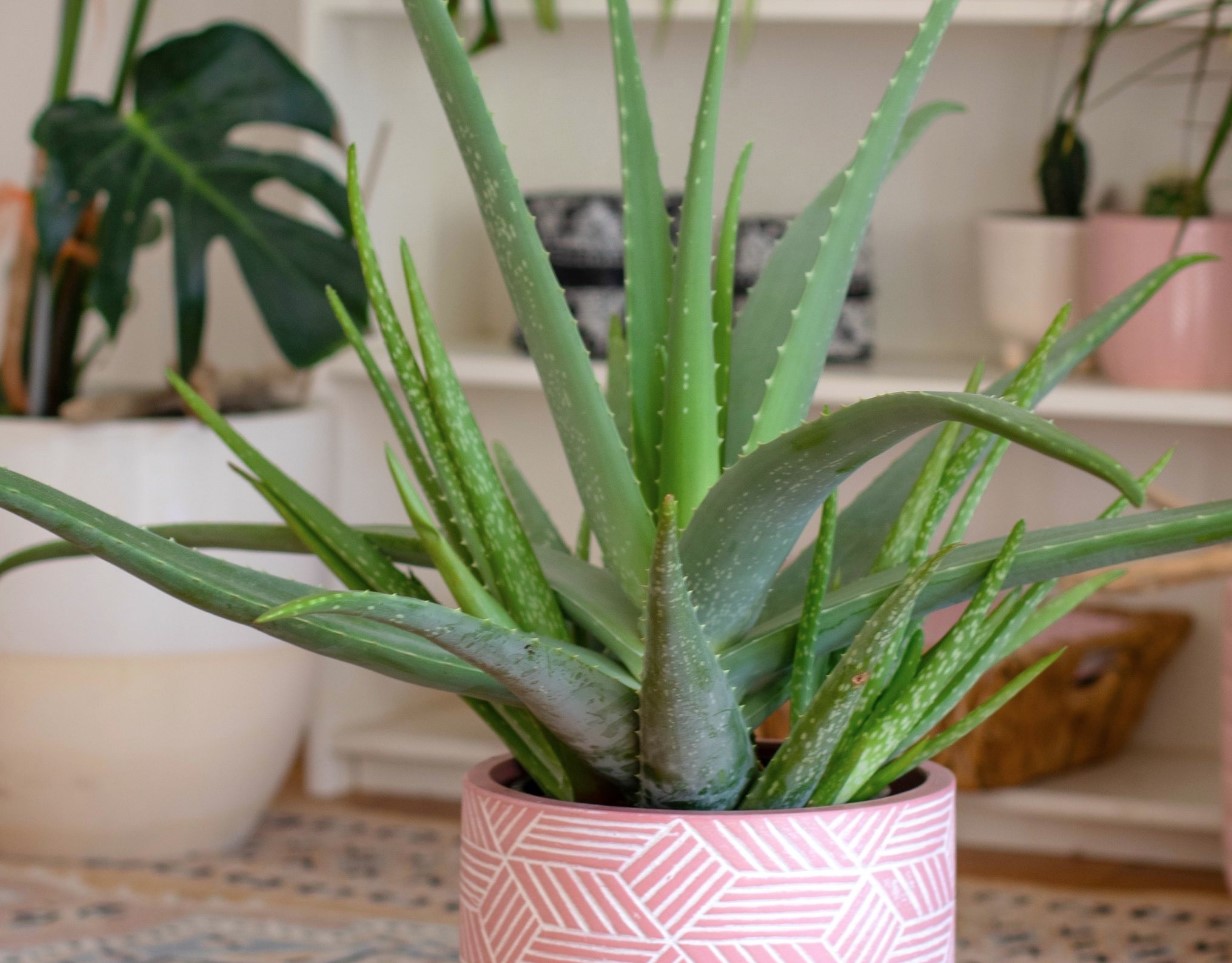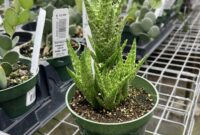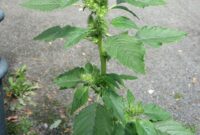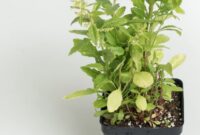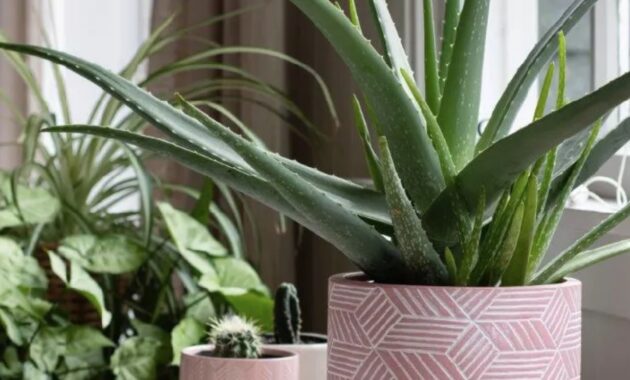
Aloe vera, a succulent plant with fleshy leaves, has been used for centuries for its medicinal properties. Its gel, extracted from the leaves, is packed with vitamins, minerals, and antioxidants that offer a wide range of benefits for both skin and health.
What is Aloe Vera?
Aloe vera is a succulent plant species of the genus Aloe. Originating from the Arabian Peninsula, it thrives in hot, dry climates. Its thick, fleshy leaves store water, making it highly adaptable to harsh conditions.
How to Grow Aloe Vera Indoors
Growing aloe vera indoors is relatively easy, even for beginners. Here’s a simple guide:
- Choose a Pot: Select a pot with drainage holes to prevent waterlogging.
- Prepare the Soil: Use well-draining cactus or succulent potting mix.
- Plant the Aloe Vera: Gently place the plant in the pot and fill it with the prepared soil.
- Sunlight: Place your aloe vera plant in a bright, sunny location. However, avoid direct, intense sunlight, especially during the hottest parts of the day.
- Watering: Water your aloe vera plant sparingly. Overwatering can lead to root rot. Allow the soil to dry out completely between waterings.
Aloe Vera Plant Benefits
Aloe vera offers a plethora of benefits for both skin and health:
- Skin Care:
- Soothes sunburns
- Heals cuts and wounds
- Reduces acne and blemishes
- Moisturizes the skin
- Anti-aging properties
- Health Benefits:
- Aids digestion
- Boosts immunity
- Relieves constipation
- Lowers blood sugar levels
- Reduces inflammation
Aloe Vera Plant Home Remedies
Here are some simple home remedies using aloe vera:
- Sunburn Relief: Apply fresh aloe vera gel directly to the affected area.
- Hair Conditioner: Use aloe vera gel as a natural hair conditioner to moisturize and add shine.
- Skin Moisturizer: Mix aloe vera gel with other natural ingredients like honey or coconut oil to create a soothing moisturizer.
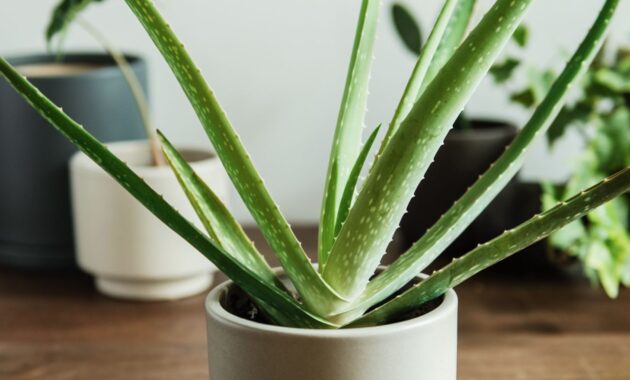
How to Take Care of an Aloe Vera Plant at Home
To keep your aloe vera plant healthy and thriving, follow these care tips:
- Sunlight: Provide bright, indirect sunlight.
- Watering: Water infrequently, allowing the soil to dry out completely between waterings.
- Soil: Use well-draining cactus or succulent potting mix.
- Fertilizing: Fertilize your aloe vera plant once or twice a year during the growing season.
- Repotting: Repot your aloe vera plant every 2-3 years or when it becomes root-bound.
Best Soil for Aloe Vera Plant
A well-draining soil mix is crucial for the health of your aloe vera plant. A cactus or succulent potting mix is ideal as it provides excellent drainage and aeration. You can also create your own soil mix by combining equal parts of potting soil, perlite, and coarse sand.
Can Aloe Vera Plant Grow in Low Light?
While aloe vera plants prefer bright, indirect sunlight, they can tolerate low-light conditions. However, they may grow more slowly and produce fewer offsets in low light.
Aloe Vera Plant Benefits for Skin and Hair
Aloe vera is a natural wonder for both skin and hair. It can help soothe sunburns, heal wounds, moisturize the skin, reduce acne, and promote hair growth.
How to Propagate Aloe Vera Plant
Propagating aloe vera plants is easy and can be done through offsets or leaf cuttings:
- Offsets: Gently remove offsets from the base of the mother plant and plant them in a pot with well-draining soil.
- Leaf Cuttings: Cut a healthy leaf from the mother plant, allow it to dry for a few days, and then plant it in a pot with well-draining soil.
Aloe Vera Plant Health Benefits for Digestion
Aloe vera gel can help soothe digestive issues like constipation and irritable bowel syndrome. It can also help reduce inflammation in the digestive tract.
Aloe Vera Plant in Bedroom for Air Purification
Aloe vera plants can help purify the air in your bedroom by absorbing toxins like formaldehyde and benzene. They can also help improve sleep quality.
Aloe Vera Plant Watering Schedule
Overwatering is a common mistake when caring for aloe vera plants. It’s best to water your plant deeply but infrequently. Allow the soil to dry out completely between waterings.
How Often to Water Aloe Vera Plant
The frequency of watering your aloe vera plant depends on several factors, including the pot size, soil type, and environmental conditions. As a general rule, water your plant once every 2-3 weeks during the growing season and less frequently in winter.
Benefits of Aloe Vera Gel from Plant
Fresh aloe vera gel, extracted directly from the plant, is the most potent form of this natural remedy. It offers a wide range of benefits for skin and health, including soothing sunburns, healing wounds, and moisturizing the skin.
How Big Does an Aloe Vera Plant Get?
The size of an aloe vera plant can vary depending on the species and growing conditions. Some species can grow quite large, while others remain relatively small.
How to Prune an Aloe Vera Plant
Pruning your aloe vera plant can help maintain its shape and promote new growth. You can remove old, damaged, or unsightly leaves using a clean, sharp knife.
Ideal Temperature for Aloe Vera Plant
Aloe vera plants thrive in warm temperatures between 65°F and 85°F (18°C and 30°C). They can tolerate slightly higher temperatures, but extreme heat can stress the plant.
Where to Place Aloe Vera Plant in House
Place your aloe vera plant in a bright, sunny location, such as a south-facing window. However, avoid direct, intense sunlight, especially during the hottest parts of the day.
Can Aloe Vera Plant Be in Direct Sunlight?
While aloe vera plants prefer bright, indirect sunlight, they can tolerate short periods of direct sunlight. However, prolonged exposure to intense sunlight can scorch the leaves.
Aloe Vera Plant for Sale
Aloe vera plants are widely available for sale online and at local nurseries and garden centers. You can find a variety of sizes and species to suit your needs.
Organic Aloe Vera Plants Online
If you prefer organic plants, you can purchase them online from reputable sellers. Be sure to choose a seller that uses sustainable and eco-friendly practices.
Buy Aloe Vera Plant Indoor Planter
You can purchase stylish indoor planters to enhance the beauty of your aloe vera plant. Choose a pot that is both functional and aesthetically pleasing.
Aloe Vera Plant Gel for Skin Care
Aloe vera gel is a popular ingredient in many skin care products. It can help soothe sunburns, heal wounds, moisturize the skin, and reduce acne.
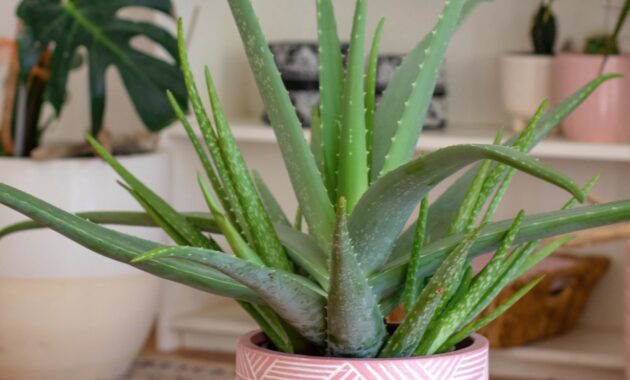
Aloe Vera Plant Extract Products
Aloe vera extract is used in a wide range of products, including skin care, hair care, and health supplements. It offers a variety of benefits for both skin and health.
Conclusion
Aloe vera is a versatile plant with numerous benefits for skin and health. By following simple care tips, you can easily grow and maintain a healthy aloe vera plant at home. Incorporating aloe vera into your daily routine can help you achieve radiant skin, healthy hair, and overall well-being.
FAQs
- Is it safe to eat aloe vera gel directly from the plant?
While fresh aloe vera gel is safe to apply topically, it’s important to consult with a healthcare professional before ingesting it, as it may interact with certain medications. - Can I use aloe vera gel on my face daily?
Yes, you can use aloe vera gel on your face daily. It can help hydrate your skin and reduce acne. However, it’s important to patch test it first to avoid any allergic reactions. - How long does it take for an aloe vera plant to grow?
The growth rate of an aloe vera plant can vary depending on the species and growing conditions. Generally, it can take several years for an aloe vera plant to reach maturity. - Can I overwater my aloe vera plant?
Yes, overwatering is a common mistake that can lead to root rot. It’s important to allow the soil to dry out completely between waterings. - Can I use aloe vera gel on my hair?
Yes, aloe vera gel can be used as a natural hair conditioner. It can help moisturize your hair, reduce dandruff, and promote hair growth.
